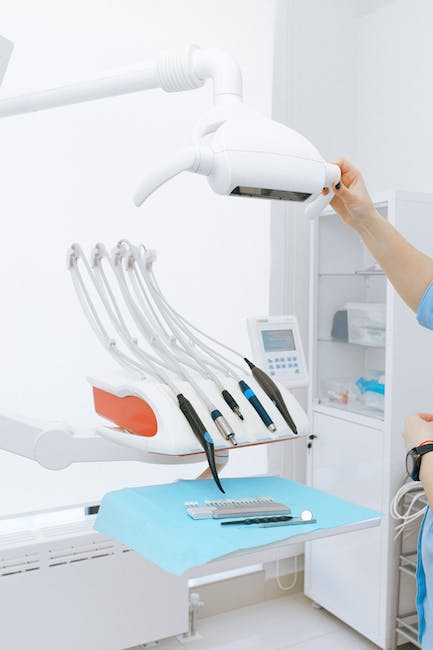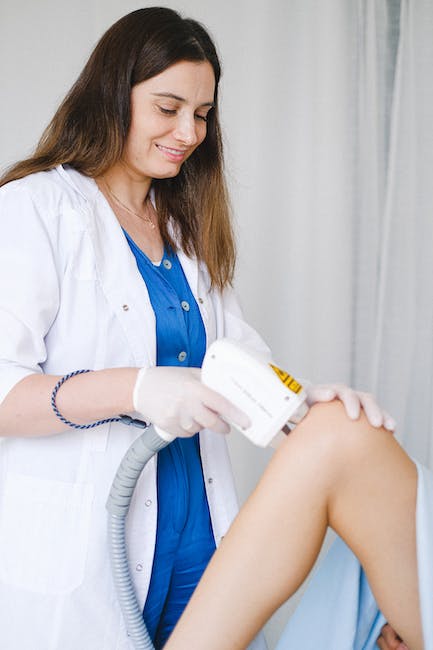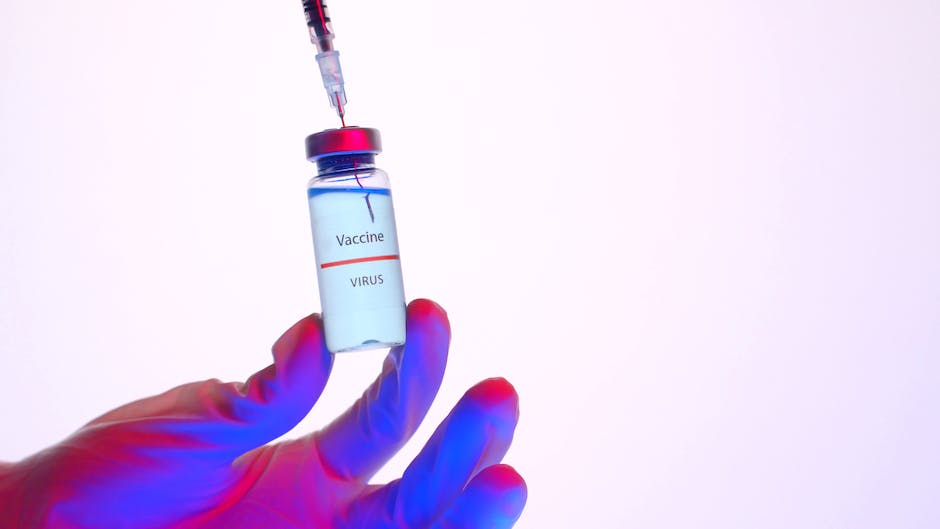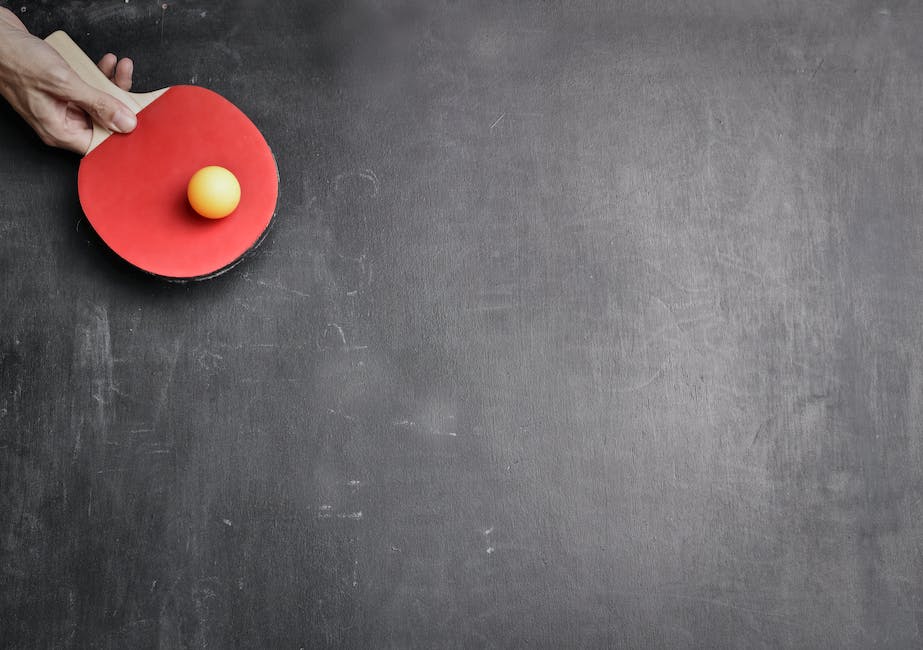Tennis elbow is a condition that causes pain and inflammation in the tendons that connect the forearm muscles to the elbow lateral epicondyle, a bony bump on the outside of the elbow. The medical term for tennis elbow is lateral epicondylitis. Despite its name, tennis elbow is not only caused by playing tennis. It can also result from other activities that involve repetitive or forceful movements of the forearms and wrist, such as gardening, painting, typing, or carpentry.
In this blog post, we will answer some common questions about tennis elbow, such as:
- What are the symptoms of tennis elbow?
- How is tennis elbow diagnosed and treated?
- How can you prevent tennis elbow from happening or getting worse?
- How long does it take to recover from tennis elbow?
- What are the possible complications of tennis elbow?

What are the symptoms of tennis elbow?
The main symptom of tennis elbow is pain and tenderness on the outside of the elbow, which may radiate to the forearm and wrist. The pain usually worsens when you try to do things that involve gripping, twisting, or extending your wrist, such as holding a racquet, shaking hands, turning a doorknob, or lifting a heavy object. You may also experience stiffness, swelling, or reduced range of motion in your elbow joint.
The symptoms of tennis elbow may develop gradually over time, or suddenly after a single injury. They may affect one or both arms, depending on which arm you use more often for your activities. The symptoms may vary in severity, from mild discomfort to severe pain that interferes with your daily life.
How is tennis elbow diagnosed and treated?
To diagnose tennis elbow, your doctor will ask you about your medical history, your symptoms, and your activities. They will also examine your elbow and perform some tests to check for pain and weakness in your forearm muscles and tendons. These tests may include:
- Resisted wrist extension: Your doctor will ask you to bend your wrist back while they apply pressure to it.
- Resisted middle finger extension: Your doctor will ask you to straighten your middle finger while they apply pressure to it.
- Cozen’s test: Your doctor will ask you to make a fist with your thumb inside while they press on your lateral epicondyle.
- Mill’s test: Your doctor will ask you to straighten your arm and bend your wrist down while they press on your lateral epicondyle.
Your doctor may also order some imaging tests, such as X-rays, ultrasound, or MRI, to rule out other conditions that may cause similar symptoms, such as arthritis, nerve compression, or fracture.
The treatment of tennis elbow depends on the severity of your condition and your personal preferences. The main goals of treatment are to reduce pain and inflammation, promote healing of the tendons, restore function and strength of the forearm muscles, and prevent recurrence of the condition. Some of the common treatment options for tennis elbow are:
- Rest: You should avoid or modify the activities that cause or worsen your symptoms until your pain improves. You may also use a splint or brace to support your elbow and limit its movement.
- Ice: You can apply ice packs to your elbow for 15 to 20 minutes several times a day to reduce swelling and pain.
- Medication: You can take over-the-counter anti-inflammatory drugs, such as ibuprofen or naproxen, to relieve pain and inflammation. However, you should not use these drugs for more than two weeks without consulting your doctor, as they may cause side effects such as stomach ulcers or bleeding.
- Physical therapy: You can consult a physical therapist who can teach you exercises and stretches to improve the flexibility and strength of your forearm muscles and tendons. They can also use techniques such as massage, ultrasound, electrical stimulation, or shock wave therapy to stimulate blood flow and healing in the affected area.
- Steroid injections: Your doctor may inject corticosteroids into your lateral epicondyle to reduce inflammation and pain. However, these injections should be used sparingly and cautiously, as they may weaken the tendons and increase the risk of rupture.
- Surgery: If conservative treatments fail to improve your symptoms after six months or more, you may consider surgery as a last resort. Surgery involves removing the damaged part of the tendon and reattaching it to the bone. The recovery time after surgery may vary from three months to a year.

How can you prevent tennis elbow from happening or getting worse?
The best way to prevent tennis elbow is to avoid or reduce the activities that cause or aggravate your condition. However, if you cannot avoid these activities, you can take some measures to protect your elbow and prevent further injury, such as:
- Warm up: You should warm up your muscles and joints before engaging in any activity that involves your arms. You can do some gentle stretches and exercises to increase blood flow and flexibility in your elbow and forearm.
- Use proper equipment and technique: If you play racquet sports, you should use a racquet that fits your hand size, grip strength, and skill level. You should also use a racquet with a larger head size, lower string tension, and softer strings to reduce the impact and vibration on your elbow. You should also learn and practice the correct technique for hitting the ball, such as using your whole arm and shoulder instead of just your wrist.
- Take breaks: You should take frequent breaks during your activities to rest your elbow and prevent overuse. You can also alternate between different activities to avoid repetitive motions with your arm.
- Strengthen your muscles: You should do exercises that strengthen the muscles of your forearm, wrist, and hand, as well as your shoulder and upper back. Stronger muscles can help support and stabilize your elbow joint and reduce the stress on your tendons.

How long does it take to recover from tennis elbow?
The recovery time from tennis elbow may vary depending on the severity of your condition, the type of treatment you choose, and how well you follow the instructions of your doctor or physical therapist. In general, it may take from several weeks to several months for your symptoms to improve with conservative treatments. However, some people may experience chronic or recurrent pain that lasts for more than a year.
The recovery time after surgery may be longer than conservative treatments, as you will need to wear a cast or splint for several weeks to immobilize your elbow. You will also need to undergo physical therapy for several months to regain the range of motion and strength of your elbow.

What are the possible complications of tennis elbow?
Tennis elbow is usually not a serious condition, and most people recover fully with proper treatment and care. However, some people may develop complications from tennis elbow, such as:
- Chronic pain: Some people may have persistent or recurring pain in their elbow that does not respond well to treatment. This may affect their quality of life and ability to perform daily activities.
- Tendon rupture: In rare cases, the tendon that attaches the forearm muscles to the lateral epicondyle may tear or rupture due to excessive stress or injury. This may cause severe pain and weakness in the elbow and require surgery to repair the tendon.
- Nerve damage: In some cases, the inflammation of the tendon may compress or irritate the radial nerve that runs along the outside of the elbow. This may cause numbness, tingling, or burning sensations in the forearm, wrist, or hand.

Conclusion
Tennis elbow is a common condition that affects many people who play racquet sports or perform repetitive motions with their arms. It causes pain and inflammation in the tendons that connect the forearm muscles to the elbow lateral epicondyle. The symptoms of tennis elbow usually worsen when you try to do things that involve gripping, twisting, or extending your wrist.
The treatment of tennis elbow depends on the severity of your condition and your personal preferences. The main goals of treatment are to reduce pain and inflammation, promote healing of the tendons, restore function and strength of the forearm muscles, and prevent recurrence of the condition. Some of the common treatment options for tennis elbow are rest, ice, medication, physical therapy, steroid injections, and surgery.
The best way to prevent tennis elbow is to avoid or reduce the activities that cause or aggravate your condition. However, if you cannot avoid these activities, you can take some measures to protect your elbow and prevent further injury, such as warming up, using proper equipment and technique, taking breaks, and strengthening your muscles.
The recovery time from tennis elbow may vary depending on the severity of your condition, the type of treatment you choose, and how well you follow the instructions of your doctor or physical therapist. In general, it may take from several weeks to several months for your symptoms to improve with conservative treatments. However, some people may experience chronic or recurrent pain that lasts for more than a year.
Tennis elbow is usually not a serious condition, and most people recover fully with proper treatment and care. However, some people may develop complications from tennis elbow, such as chronic pain, tendon rupture, or nerve damage.
We hope this blog post has helped you understand more about tennis elbow and how to deal with it. If you have any questions or concerns about your condition, please consult your doctor or physical therapist for professional advice.

FAQ
What is the difference between tennis elbow and golfer’s elbow?
Tennis elbow and golfer’s elbow are both types of elbow tendinitis, which means inflammation of the tendons that attach the forearm muscles to the elbow. However, they affect different parts of the elbow. Tennis elbow affects the lateral epicondyle, which is the bony bump on the outside of the elbow. Golfer’s elbow affects the medial epicondyle, which is the bony bump on the inside of the elbow. The symptoms and treatments of both conditions are similar, but they may require different modifications of activities and exercises.
What causes tennis elbow in non-athletes?
Tennis elbow is not only caused by playing tennis or other racquet sports. It can also result from any activity that involves repetitive or forceful movements of the forearms and wrist, such as gardening, painting, typing, or carpentry. These activities can cause micro-tears in the tendons that connect the forearm muscles to the lateral epicondyle, leading to pain and inflammation. The risk of developing tennis elbow may increase with age, as the tendons become less flexible and more prone to injury.
How can I tell if I have tennis elbow or a nerve problem?
Tennis elbow and nerve problems can cause similar symptoms, such as pain, numbness, tingling, or weakness in the forearm, wrist, or hand. However, there are some ways to distinguish between them. For example:
- Tennis elbow pain usually worsens when you try to do things that involve gripping, twisting, or extending your wrist, such as holding a racquet, shaking hands, turning a doorknob, or lifting a heavy object. Nerve pain may be constant or intermittent, and may not change with movement.
- Tennis elbow pain usually affects only the outside of the elbow and may radiate to the forearm and wrist. Nerve pain may affect any part of the arm or hand, depending on which nerve is affected.
- Tennis elbow pain usually responds well to rest, ice, medication, physical therapy, steroid injections, or surgery. Nerve pain may require different treatments, such as medication, nerve blocks, electrical stimulation, or surgery.
To confirm the diagnosis of tennis elbow or a nerve problem, your doctor may perform some tests to check for pain and weakness in your forearm muscles and tendons, such as resisted wrist extension, resisted middle finger extension, Cozen’s test, or Mill’s test. They may also order some imaging tests, such as X-rays, ultrasound, or MRI, to rule out other conditions that may cause similar symptoms. They may also perform a test called electromyography (EMG), which measures the electrical activity of your muscles and nerves.
How effective are steroid injections for tennis elbow?
Steroid injections are one of the treatment options for tennis elbow that aim to reduce inflammation and pain in the affected area. Steroid injections may provide short-term relief for some people with tennis elbow, especially if they have severe pain that does not improve with other treatments. However, steroid injections are not a cure for tennis elbow and do not address the underlying cause of the condition. They may also have some side effects and risks, such as:
- Infection
- Bleeding
- Skin discoloration
- Allergic reaction
- Tendon weakening
- Tendon rupture
Therefore, steroid injections should be used sparingly and cautiously for tennis elbow and only under the guidance of your doctor. They should not be used more than three times in one year for the same area.
What are some natural remedies for tennis elbow?
Some natural remedies that may help with tennis elbow include:
- Applying ice packs to your elbow for 15 to 20 minutes several times a day to reduce swelling and pain.
- Taking over-the-counter anti-inflammatory drugs, such as ibuprofen or naproxen, to relieve pain and inflammation. However, you should not use these drugs for more than two weeks without consulting your doctor.
- Applying topical creams or gels that contain ingredients such as menthol, capsaicin, arnica, or turmeric to your elbow to soothe pain and inflammation.
- Consuming foods or supplements that have anti-inflammatory properties, such as omega-3 fatty acids (found in fish oil), curcumin (found in turmeric), bromelain (found in pineapple), ginger, garlic,
or green tea. - Drinking plenty of water to keep your body hydrated and flush out toxins.
- Getting enough sleep and rest to allow your body to heal and recover.
However, these natural remedies are not substitutes for medical treatment and should be used in conjunction with your doctor’s advice.
How can I prevent tennis elbow from recurring?
To prevent tennis elbow from recurring after you recover from it,
you should follow these tips:
- Avoid or modify the activities that cause or worsen your symptoms until your pain improves. You may also use a splint or brace to support your elbow and limit its movement.
- Warm up your muscles and joints before engaging in any activity that involves your arms. You can do some gentle stretches and exercises to increase blood flow and flexibility in your elbow and forearm.
- Use proper equipment and technique if you play racquet sports. You should use a racquet that fits your hand size, grip strength, and skill level. You should also use a racquet with a larger head size, lower string tension, and softer strings to reduce the impact and vibration on your elbow. You should also learn and practice the correct technique for hitting the ball, such as using your whole arm and shoulder instead of just your wrist.
- Take frequent breaks during your activities to rest your elbow and prevent overuse. You can also alternate between different activities to avoid repetitive motions with your arm.
- Strengthen your muscles of your forearm, wrist, and hand, as well as your shoulder and upper back. Stronger muscles can help support and stabilize your elbow joint and reduce the stress on your tendons.
How can I exercise with tennis elbow?
Exercise is important for maintaining the health and function of your elbow joint, as well as for preventing stiffness, weakness, or atrophy of your muscles. However, you should be careful not to overdo it or aggravate your condition. Here are some guidelines for exercising with tennis elbow:
- Consult your doctor or physical therapist before starting any exercise program. They can advise you on the type, intensity, frequency, and duration of exercises that are suitable for your condition.
- Start with low-impact exercises that do not involve gripping, twisting, or extending your wrist, such as walking, swimming, cycling, or elliptical training. These exercises can help improve your cardiovascular fitness and blood circulation without putting too much strain on your elbow.
- Gradually progress to exercises that target the flexibility and strength of your forearm muscles and tendons, such as wrist curls, wrist extensions, finger extensions, pronation/supination, or resistance band exercises. These exercises can help restore the range of motion and strength of your elbow joint and prevent recurrence of tennis elbow. However, you should only do these exercises when your pain has subsided and under the guidance of your physical therapist.
- Avoid exercises that cause or worsen your pain, such as lifting heavy weights, doing push-ups, or playing racquet sports. These exercises can further damage your tendons and delay your recovery.
What are some alternative therapies for tennis elbow?
Some alternative therapies that may help with tennis elbow include:
- Acupuncture: Acupuncture is a traditional Chinese medicine technique that involves inserting thin needles into specific points on the body to stimulate the flow of energy and promote healing. Acupuncture may help reduce pain and inflammation in tennis elbow by releasing endorphins (natural painkillers) and relaxing the muscles.
- Massage: Massage is a manual therapy that involves applying pressure and movement to the soft tissues of the body to improve blood flow and relieve tension. Massage may help ease pain and stiffness in tennis elbow by increasing circulation, breaking up scar tissue, and relaxing the muscles.
- Chiropractic: Chiropractic is a form of alternative medicine that focuses on the diagnosis and treatment of disorders of the musculoskeletal system, especially the spine. Chiropractic may help improve the alignment and function of the elbow joint by manipulating the bones, joints, ligaments, or nerves.
- Osteopathy: Osteopathy is a form of alternative medicine that emphasizes the interrelationship between the structure and function of the body. Osteopathy may help restore the balance and harmony of the elbow joint by applying gentle pressure or stretching to the bones, muscles, tendons, or fascia.
However, these alternative therapies are not proven to be effective for tennis elbow and may have some risks or side effects. Therefore,
you should consult your doctor before trying any of them.
How common is tennis elbow?
Tennis elbow is a common condition that affects about 1% to 3% of the general population. However,
it is more prevalent among people who play racquet sports or perform repetitive motions with their arms. It is estimated that up to 50% of tennis players may experience tennis elbow at some point in their lives. Tennis elbow usually affects people between the ages of 30
and 50, but it can occur at any age.
Can tennis elbow lead to arthritis?
Tennis elbow is not a form of arthritis, which is a chronic condition that causes inflammation and degeneration of the joints. Tennis elbow is an acute or subacute condition that causes inflammation and micro-tears in the tendons that attach the forearm muscles to the lateral epicondyle. However,
tennis elbow may increase the risk of developing arthritis in the future if it is not treated properly or if it causes permanent damage to the cartilage or bone of the elbow joint. Therefore,
it is important to seek medical attention for tennis elbow as soon as possible








No Comment! Be the first one.